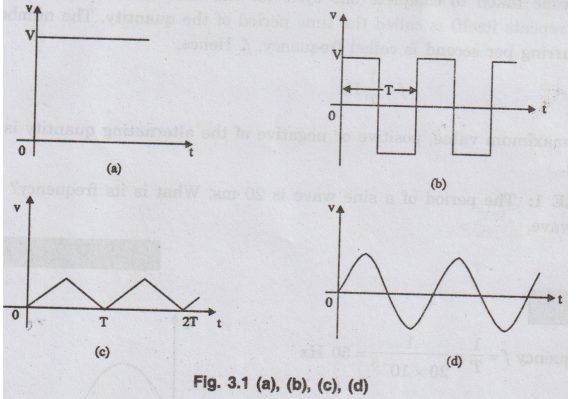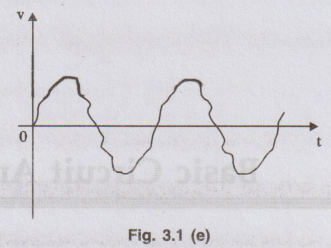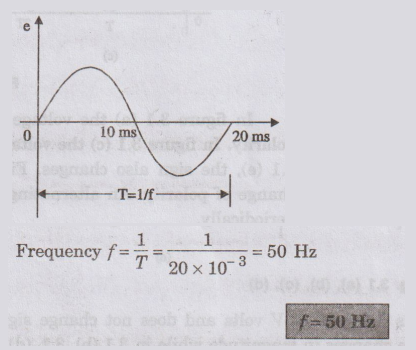Electric Circuit Analysis: Chapter - 3: Basic Circuit Analysis - AC
Basic Circuit Analysis - AC
Alternating current and voltage sources are widely used in practice. Unlike the DC source, the AC source gives a voltage (or current) that varies with time.
CHAPTER -3
Basic Circuit Analysis - AC
INTRODUCTION
Alternating
current and voltage sources are widely used in practice. Unlike the DC source,
the AC source gives a voltage (or current) that varies with time. The voltage
changes not only in magnitude but also in direction (or polarity). In figure
3.1 (a) is plotted a constant DC voltage whereas in figures 3.1 (b), 3.1 (c),
3.1 (d) and 3.1 (e) some alternating voltages are shown.

In
figure 3.1 (a) the voltage is constant at V volts and does not change sign or
polarity. In figure 3.1 (c) the voltage changes in magnitude while in 3.1 (b),
3.1 (d) and 3.1 (e), the sign also changes. Figure 3.1 (c) represents only time
variation, but not change of polarity. An alternating quantity is one which
changes sign and magnitude periodically.

Usually
the alternating quantities are periodic in nature, i.e., they repeat cyclically
after a constant interval of time, say T. Hence,
v(t)
= v(t+T) = v (t + 2T) and so on …. (1)
or
v
(t) = v (t + nT), n = 0, 1, 2
The
time taken to complete one cycle (or the time interval, T after which the
waveform repeats itself) is called the time period of the quantity. The number
of such cycles occurring per second is called frequency, f. Hence,
f
= 1 / T Hz …… (2)
The
maximum value, positive or negative of the alternating quantity is called its
amplitude.
EXAMPLE
1:
The period of a sine wave is 20 ms. What is its frequency? Represent the
sine wave.
Solution:

Electric Circuit Analysis: Chapter - 3: Basic Circuit Analysis - AC : Tag: : - Basic Circuit Analysis - AC